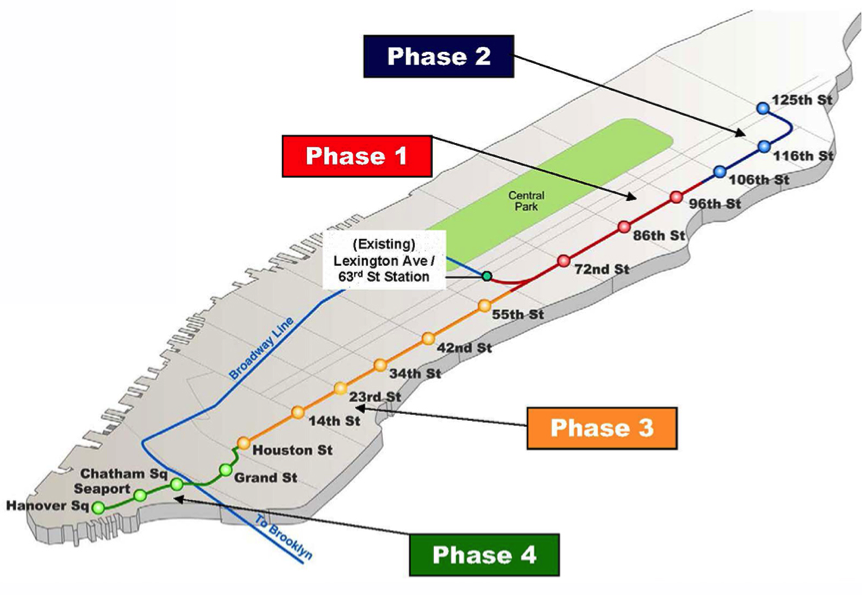February 5, 2017
New York City celebrated New Year’s Day with not only its famous ball drop, but also opening its newest subway line: the Second Avenue Subway.
The Second Avenue Subway welcomed its first passengers at noon on January 1st. The initial segment extends the existing Q line by adding three stations: 72nd, 86th, and 96th Streets, located in the Upper East Side of Manhattan.

Source: Remapping Debate
As one the most anticipated public transit project in America’s largest city, much has been written about the Second Avenue Subway from the time construction began in 2002 to its opening this month. In addition to the technical challenges of constructing a subway line in an older and densely populated city, the line comes with its own long, drawn-out history – namely the challenging relationship between the city mayor and state governor and a total cost befitting of any megaproject: $4.45 billion (not including future phases).
The Second Avenue Subway has been nearly 100 years in the making. It began with an initial proposal in the 1920s, but further progress was derailed for decades by a series of major events, such as the Great Depression, World War II, and the 1970s financial crisis. The first phase is one of four: the full line will ultimately extend from 125th Street in East Harlem all the way to Hanover Square in the Financial District.
The project is not the only new transit project in the New York region to open in recent years and resembles other local projects with a hefty price tag, drawing concerns from industry experts about how transit megaprojects will be planned and funded in the future. For example, the World Trade Center PATH station was completed in 2014 to the tune of $4 billion, double the original project costs. With the first phase around 2 miles in length, the per-mile cost amounted to $2.2 billion, while other major cities around the world build their projects for significantly less per unit length.
And while the New York City Metropolitan Transit Authority (MTA) is a state agency, its politics are complicated by the historically strained relationship between the Governor of New York State and the Mayor of New York City.
This reached a particularly tenuous note between Governor Cuomo and Mayor de Blasio, with the MTA subject to Cuomo’s varying levels of attention (or lack thereof). Cuomo was seen as an instrumental player in the successful launch of the Second Avenue Subway in the days preceding the opening, despite the contentious public battle with de Blasio on how much the state and the city would each contribute to the agency’s capital plan (Cuomo also once denied that the MTA is a state agency).
While the opening is certainly a cause for celebration, numerous questions remain. Despite the completion of this first phase, funding has not yet been secured for the second phase that would extend the line to 125th Street, which is currently projected to cost $6 billion. This aroused significant social equity concerns, as one of the wealthiest neighborhoods in America receives the first access to a much-needed public transit corridor.
In terms of accessibility, Chris Pangilinan of TransitCenter found that while the new stations are an improvement over most others in the system – all three come with wheelchair-accessible elevators and column-free elevators that make for easier navigation – but critical issues remained: the elevators operate slowly and the lack of wide turnstiles means wheelchair users need a specific fare card to open a special gate.
In addition, there is uncertainty around long-term support from executive leadership: the MTA Chief Tom Prendergast announced the day after the Second Avenue Subway opened that he will retire this year, and Cuomo’s four-year term as governor ends in 2014. The combination of both lack of funding and departing leadership in the near future for such a large-scale project begs the question of when the remaining phases will be built – if ever.




